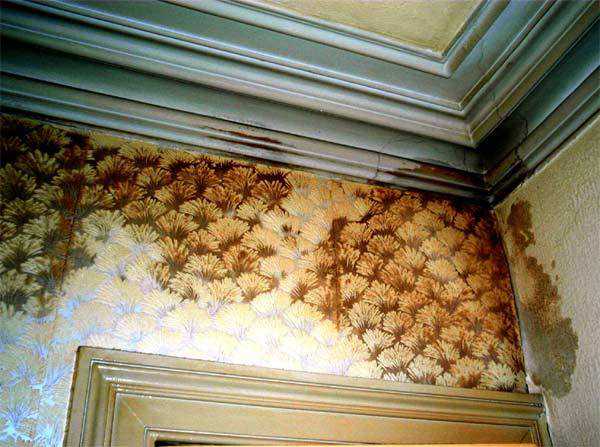
Generally the bricks used in wall foundations absorb moisture from ground by capillary action. This is the most serious problem and can be checked fully by laying a impervious layer of 40mm to 75mm thick (1:2:4) cement concrete (with water proofing compound) followed with 2 coats of bitumen @ 1.65 kg per sq.mt. laid hot and sanded at floor level in case of middle walls and 6" or 9" above ground level in case of outer walls as shown in figure-1 & 2.
Raj Kumar Aggarwal
Water is the most destructive weathering element for concrete, masonry, wood and cement plaster. Water damages or completely destroys more buildings and structures than war and natural disaster. The entry of water either by leakage or by rising of sub soil water in the walls by capillary action creates dampness.
Dampness in buildings is a serious problem. It is unpleasant for the occupant and undesirable from an aesthetic point of view and causes serious, slow and unseen deterioration of the building.
Building materials like bricks, timber and concrete have some moisture content, which is not harmful under normal conditions. The rise in moisture content where it becomes visible causes deterioration and leads to real dampness.
Dampness badly affects the structure in many ways as reinforcement steel gets rusted, deteriorated electric al pipes lead to leakage of current. Inner and outer finish is also destroyed by unsightly patches of dampness.
Floor coverings and tiles are loosened due to damp floors. The presence of salts in dampness results in weakening, cracking and crumbling of wall plaster which creates unhygienic condition for its occupants.
Remedial measures
n To prevent the entry of moisture from soil under the floors, the inside of the external walls should be provided with vertical damp-proof course consisting of 1/2" to 3/4" thick (1:3) cement plaster covered with two coats of hot bitumen 85/25 from horizontal damp proof level to floor level.
n Heavy rains also lead to the entry of moisture from outer faces of walls, if not protected suitably either by cement pointing, cement plastering (with water proof compound) or cladding with some type of stone tiles according to availability of funds.
n Poorly ventilated and badly designed toilets and kitchens are always a source of dampness. Such dampness can be checked by providing sufficient ventilation in toilets and kitchens.
n Stagnation of rain water on rooftops is also a major source of dampness and can be prevented by laying the tile terracing on roofs in a slope not less than 1:60 (preferably it should be 1:40). Provide minimum one 4 inch dia rainwater pipe for 400 to 500 sft area to drain off the rain water to avoid stagnation of water. Dampness due to defective joint between slab and parapet wall can be checked by providing 10cm x 10cm size concrete gola of (1:2:4) cement concrete along the junction of roof slab and parapet wall.
- Ugly and bad appearance of patches of dampness and efflorescence can be concealed by lining the wall with non-corrugated asbestos cement sheet or PVC sheetpaneling that is easily available in the market on reasonable prices.
- Damp proofing is must for all types of basements otherwise the basement will become useless after some time as the ground water may enter it through floor and walls, if not provided with horizontal and vertical damp proof coating. For better results basements should be constructed with RCC wall and floors.
- Entry of dampness and termites through floors can be checked by laying a 100mm thick layer of fine sand/river sand under the sub base of floors in dry location and by providing a damp-proof membrane where there is a possibility of moisture penetrating the floors.
DPC can also be provided in existing old buildings (not having DPC) to check dampness. It is provided at floor level. Firstly, a two feet long slot is made in the wall by removing two layers of bricks then already precast damp proof membrane of cement concrete with Tarfelt is inserted in it and then bricks are relaid tightly in the slot.
The cycle of cutting the slot and inserting damp- proof membrane is repeated till the entire length of wall is completed. The wall surface is then finished with plastering or skirting matching to floor finish. This treatment must be carried out under the supervision of some skilled mason or supervisor to avoid any cracks/damage to the wall.
The cost factor
The cost of damp proofing is negligible as compared to its role in protection of building from dampness. Whenever DPC is found to be ineffective, it is only due to bad workmanship or its wrong location. The DPC may be horizontal or vertical, it should be continuous and cover the full thickness of wall and should not be carried across door sills.
To check the overturning of boundary walls, bitumen coating on DPC should be replaced with floating coat of neat cement.
Proper laying of damp- proof course would help to protect the buildings from dampness — the silent killer of the buildings.
— The writer is working as Executive Engineer in Baba Farid University of Health Sciences, Faridkot



























